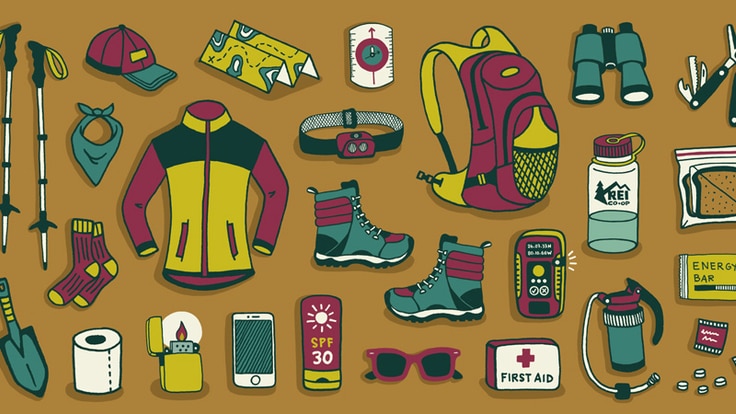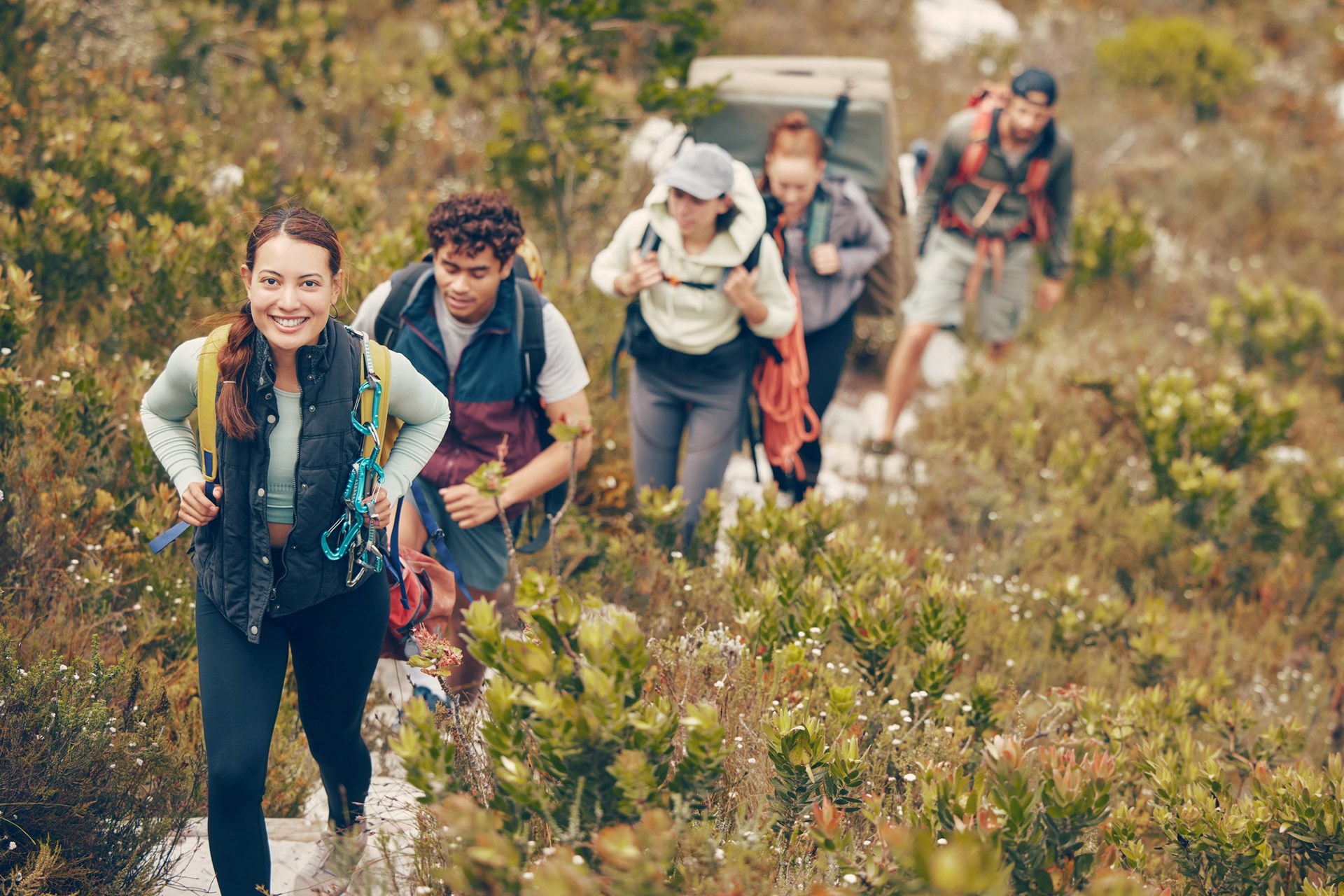Preparing for long-distance treks requires essential gear and proper training and fitness. In this article, we’ll provide tips on what gear is necessary for a successful trek, how to train for long distances, and fitness tips to make the journey easier and more enjoyable.
Whether you’re a novice or an experienced hiker, these tips will help you prepare for your next long-distance trek. From backpacks to hiking boots and proper stretching techniques, we’ll cover everything you need to know to ensure your trek is a success.
So, let’s get started!

Credit: www.rei.com
Choosing The Right Gear
Preparing for long-distance treks can be an exciting and daunting task. Choosing the right gear is one of the most crucial aspects of any trekker’s preparation. Proper gear can make all the difference between a comfortable and successful journey and a difficult one.
In this section, we’ll discuss some essential gear considerations that will help prepare you for your long-distance trek.
Proper Footwear For Long-Distance Trekking
The right footwear can make or break your long-distance trek. Here are a few things to keep in mind when selecting your shoes:
- Look for comfortable, well-fitted shoes that give enough support for your feet and ankles.
- Choose footwear specifically designed for long-distance trekking.
- Opt for waterproof shoes to keep your feet dry in wet conditions.
- Break-in your new shoes weeks before your trek to avoid blisters and discomfort during the trek.
- Consider carrying an extra pair of shoes in case of any unforeseen circumstances.
Clothing Materials And Layering Techniques
Clothing is another essential aspect of long-distance trekking. It can be challenging to maintain the right temperature while trekking for an extended period. With the following tips, it will be easier to stay comfortable:
- Choose lightweight materials that are breathable, moisture-wicking, and quick-drying.
- Wear multiple layers that can be adjusted as per temperature changes throughout the day.
- Carry a waterproof jacket or poncho to stay dry during rain or snowfall.
- Wear uv protection sunglasses, a hat, and sunscreen to protect yourself from harsh sunlight.
Backpack Essentials For Long-Distance Trekking
Your backpack is your home away from home on a long-distance trek, and it’s essential to pack wisely. Here is what you should carry:
- A sturdy and comfortable backpack with enough space to carry all necessary items.
- A sleeping bag and tent (if required), a first-aid kit, and basic toiletries.
- A water bottle and filter, snacks, and a camping stove to prepare hot meals.
- Consider carrying extra batteries for your flashlight, camera, or any other electronic devices.
Navigation Aids And Safety Gear
Navigation aids and safety gear can be lifesavers in case of any emergencies. Here’s what you should carry:
- A detailed map and compass or gps device to navigate your way through the trek.
- A whistle, a mirror, and a signal fire starter to signal for help in case of any emergencies.
- A personal locator beacon or satellite phone to request emergency assistance if required.
- Be sure to research and carry any other recommended safety gear according to your location.
Remember, carrying the right gear will not only make your long-distance trek comfortable but also ensure your safety. Trekking is a challenging activity that requires both physical and mental preparation. With the right gear and a positive mindset, your long-distance trek will be an unforgettable experience.
Training For Long-Distance Treks
Preparing For Long-Distance Treks: Essential Gear, Training, And Fitness Tips
Long-distance trekking is a mentally and physically demanding activity that requires adequate preparation, training, and fitness. To embark on such an adventure without proper planning can lead to injury, exhaustion, and disappointment. In this blog post, we will discuss some essential gear, training, and fitness tips to ensure that you are well-prepared for a long-distance trek.
Let’s begin by exploring the importance of training for long-distance treks.
Building endurance through cardio and strength training:
When it comes to preparing for long-distance treks, building endurance is critical. You can build endurance through a combination of cardio and strength training, which will help you improve your stamina and minimize the risk of injury. Some of the most effective forms of cardio include walking, running, cycling, and swimming.
Strength training can be done using weights, resistance bands, or bodyweight exercises.
- Include both cardio and strength training in your training regimen.
- Focus on low-impact cardio exercises such as walking and cycling to avoid injury.
- Strength training should focus on your legs, core, and upper body to improve overall fitness.
- Gradually increase the intensity and duration of your workouts.
Mental preparation for long-distance trekking:
Mental preparation is equally important as physical preparation. Trekking for extended periods in isolated areas can be mentally challenging. You will face unexpected situations that require quick and accurate decision-making skills. Develop your mental strength by practicing mindfulness, visualization, and embracing a positive attitude.
- Practice mindfulness meditation to learn how to focus your mind and control your thoughts.
- Create a pre-trek visualization routine where you imagine yourself successfully completing the trek.
- Maintain a positive mindset and avoid negative self-talk.
Planning and executing a training regimen:
To execute a successful training regimen, you must have a detailed plan that reflects your fitness level and goals. You can develop a training schedule by breaking it down into weekly milestones and gradually increasing the intensity of your workouts.
- Set realistic goals and timeframe for your training regimen.
- Create a balanced training plan that covers cardio, strength, and flexibility training.
- Incorporate rest days into your training schedule to avoid burnout.
- Regularly evaluate your progress and make adjustments when necessary.
Tips on acclimatizing to different altitudes:
Long-distance treks often involve ascending to higher altitudes, which can cause altitude sickness. Acclimatizing to different altitudes is vital to your success. You can acclimate by gradually ascending to higher altitudes, staying hydrated, and avoiding alcohol.
- Allow yourself enough time to acclimate before you start the trek.
- Stay hydrated by drinking plenty of water and avoiding alcohol and caffeine.
- Listen to your body and rest if you feel any symptoms of altitude sickness.
- Consider using prescription altitude sickness medication if necessary.
Preparing for long-distance trekking requires a combination of physical and mental preparation. By following the tips provided above, you’ll increase your chances of having a successful trekking experience. Remember to build endurance through cardio and strength training, mentally prepare yourself for the challenge, plan your training regimen, and acclimate your body to different altitudes.
Conclusion
As a long-distance trekker, your fitness level, gear, and training are essential to ensure you complete your journey successfully without any injury. Preparation and planning are vital elements that cannot be ignored when you are up for a long trek.
Start with setting a goal that will help you stay motivated and plan your training regime accordingly. Invest in the right gear, including the shoes, backpack, and clothing, which are comfortable and suitable for the terrain you’ll be crossing. Be agile, and keep yourself hydrated and fueled to maintain your energy level during the trek.
Finally, it’s crucial to listen to your body and treat any injuries or ailments promptly. Take proactive measures that will help you recover quickly and continue with your journey. We hope these essential tips will help you prepare well for your adventure and have the experience of a lifetime.
Happy trekking!




